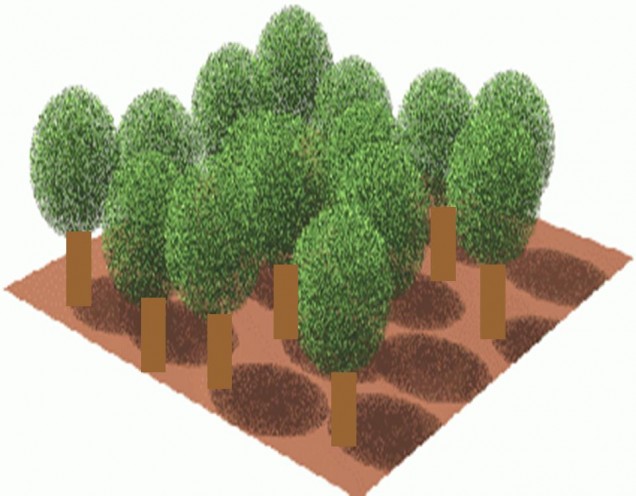GORT Model
 The Geometric Optical-Radiative Transfer (GORT) model will be the principal tool used to link Echidna® undercanopy lidar scans with airborne and spaceborne lidar scans of LVIS and GLAS. The GORT model was developed to describe the effects of three-dimensional canopy structure on the radiation environment and to characterize the heterogeneous radiation environment in natural vegetation at the forest stand scale (Li et al., 1995).
The Geometric Optical-Radiative Transfer (GORT) model will be the principal tool used to link Echidna® undercanopy lidar scans with airborne and spaceborne lidar scans of LVIS and GLAS. The GORT model was developed to describe the effects of three-dimensional canopy structure on the radiation environment and to characterize the heterogeneous radiation environment in natural vegetation at the forest stand scale (Li et al., 1995).
Merging theory from geometric optics and radiative transfer, the GORT model treats vegetation canopies as assemblages of randomly distributed tree crowns of ellipsoidal shape. The tree crowns are filled with leaves that absorb and scatter radiation passing through the crown. Pri nciples of radiative transfer are used in describing the multiple scattering of leaves inside crowns and the multiple scattering among crowns and the ground surface. The GORT model was extended by Ni et al. (1997) to include the vertical canopy gap probability profile.
For this study, we will use a physical approach to link canopy lidar energy returns with aboveground biomass. GORT will be the key bridge to those links and Echidna® will provide ground-based parameters to calibrate GORT. The primary driving parameters for GORT are tree density (stems per hectare), tree size and shape, foliage density, and the upper and lower bounds of tree height. Our previous study has shown that GORT models the above-canopy (LVIS and GLAS) lidar energy return well (Ni-Meister, et al., 2001).
Off-nadir scans from below-canopy lidar show strong laser energy returns from both leaves and trunks below the canopies. In this study we extend the GORT model to include the effect of trunk on below-canopy lidar energy returns by treating the trunks as simple uniform cylinders. The extended GORT was well test using the Echidna® data collected in eucalypt and pine woodlands around the Tumbarumba flux tower site, New South Wales, Australia.
